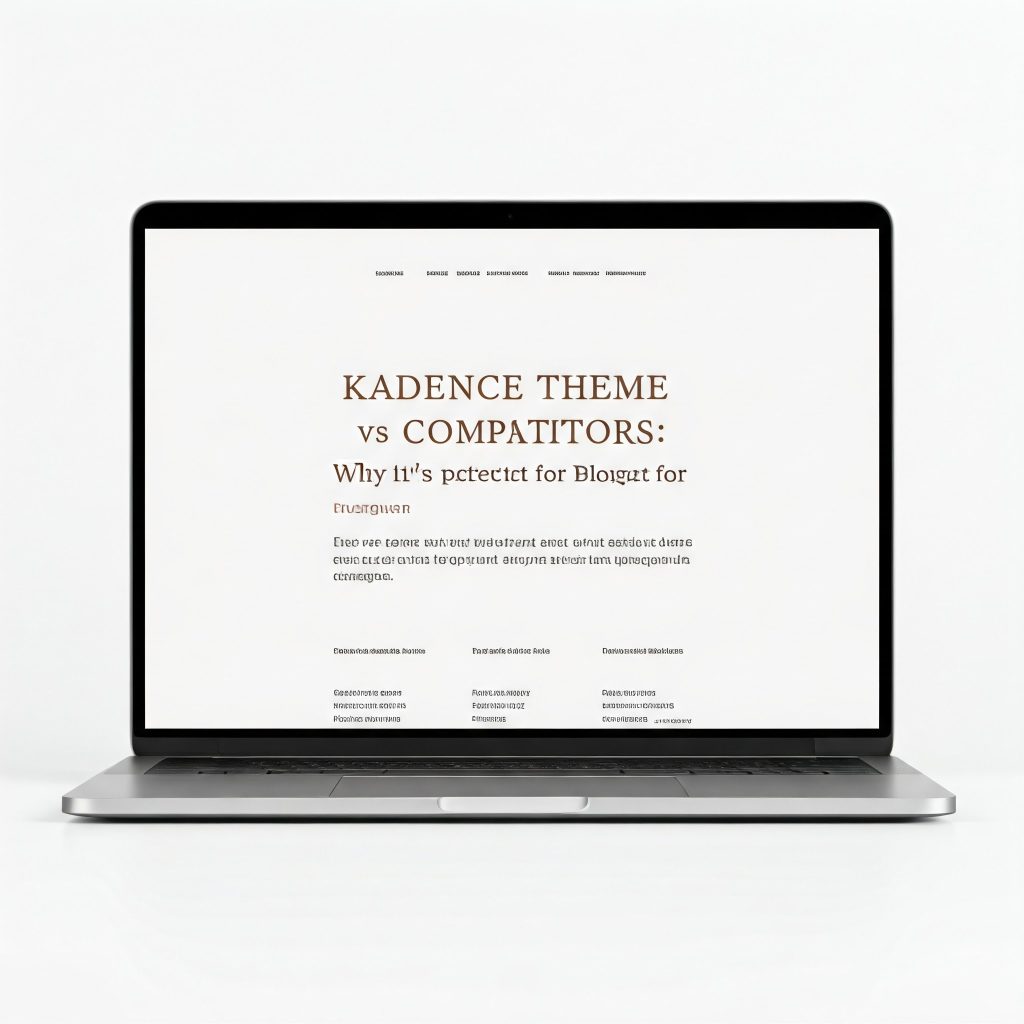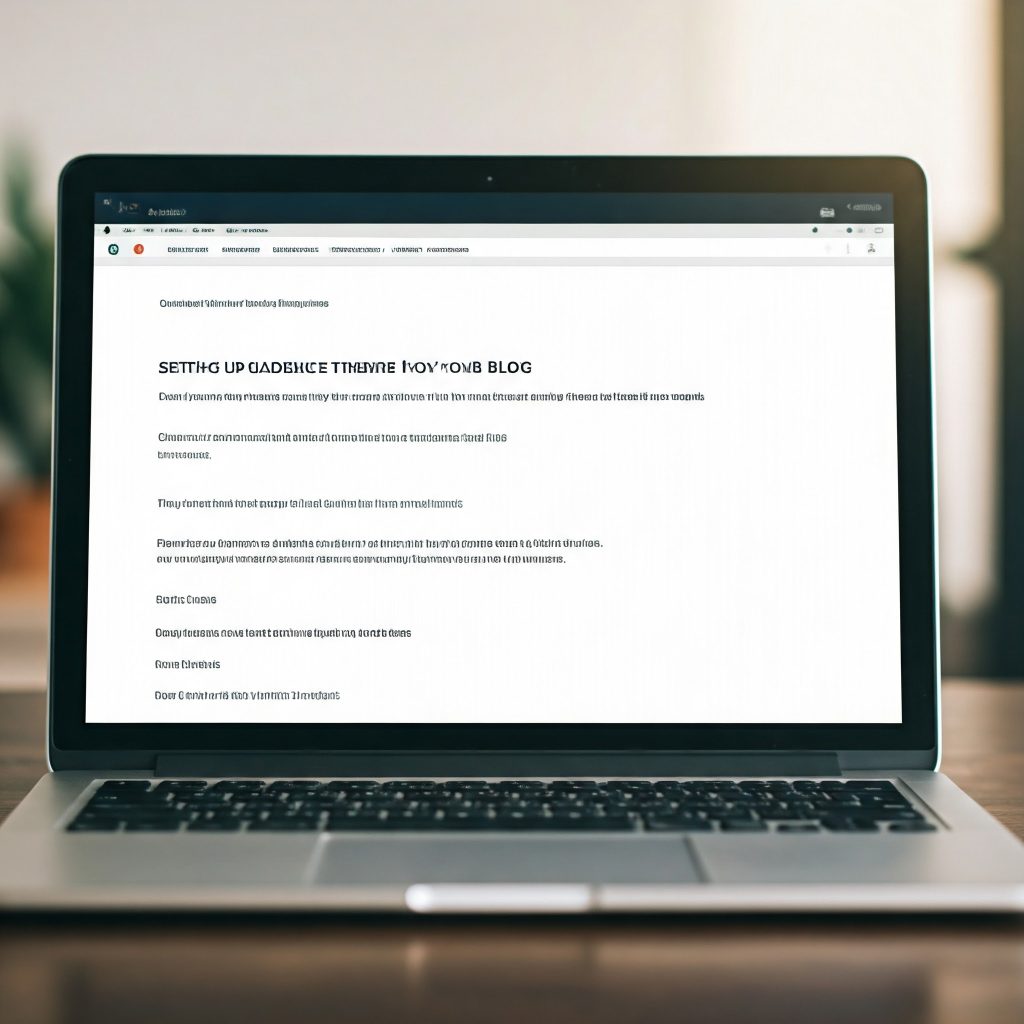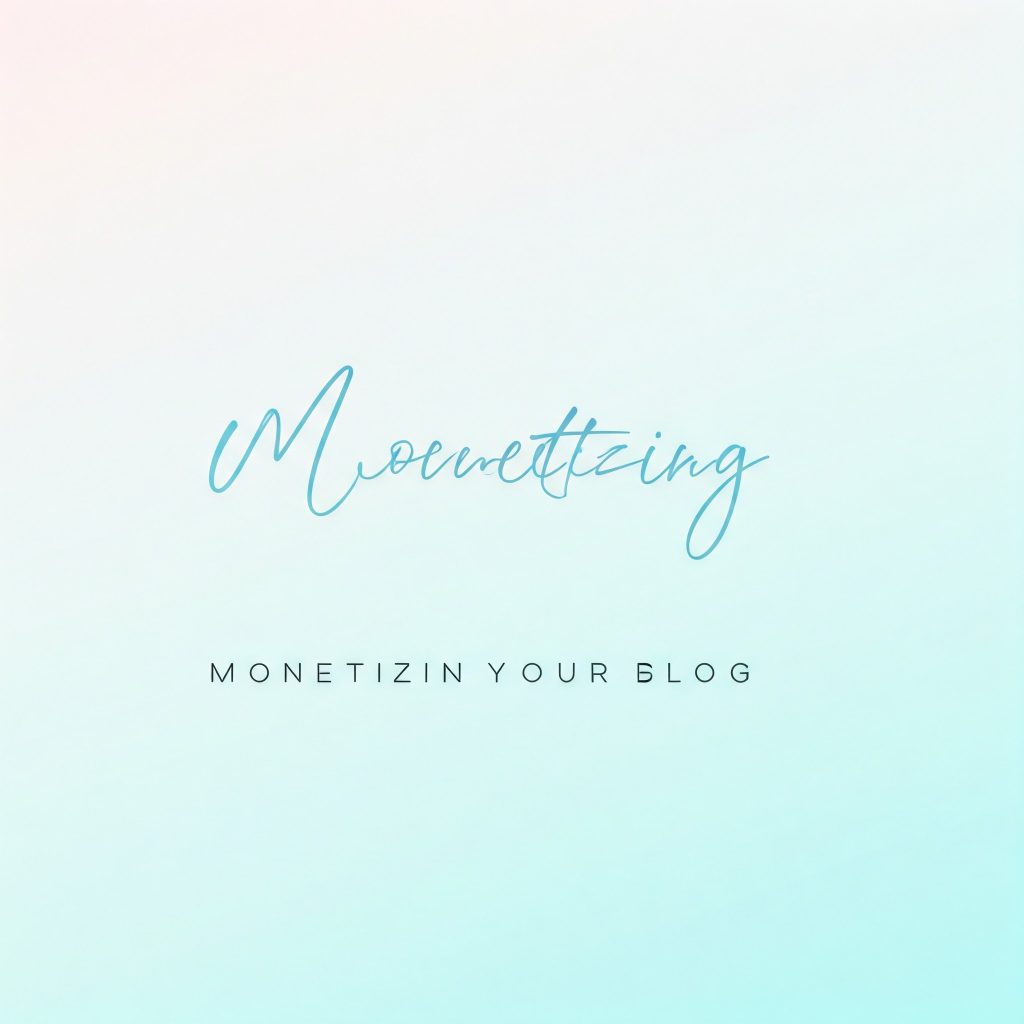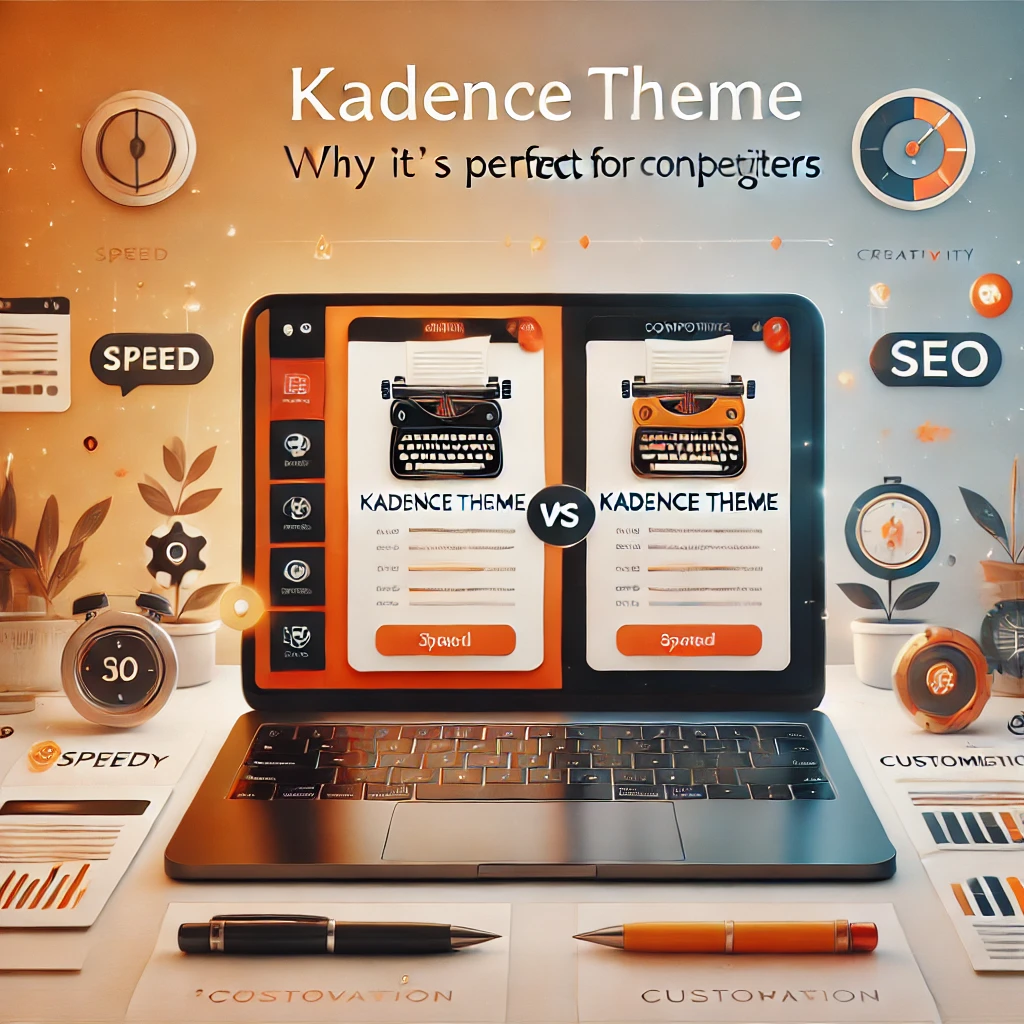Introduction

Choosing the right WordPress theme for your blog is a game-changer. It’s not just about how your site looks—it’s about how it functions, loads, and keeps your readers coming back for more. Kadence Theme has been making waves in the blogging world, and for good reason. It’s lightweight, customizable, and packed with features that cater specifically to bloggers. But how does it stack up against the competition? In this comparison, we’ll explore what makes Kadence stand out and why it might just be the perfect fit for your blogging journey. Whether you’re a seasoned pro or just starting, this guide will help you decide if Kadence is your ultimate blogging companion. Let’s dive in!
Step 1: Understanding Why Your Theme Matters

When starting your blog, one of the first and most crucial decisions you’ll make is choosing the right theme. Think of your theme as the foundation of your website—it’s the structure that shapes how your blog looks, feels, and performs. For beginners, this choice can feel overwhelming. With hundreds of themes available, how do you know which one to pick? Let’s break it down to make it simple and guide you toward the right decision.
Why Your Theme is Important
Your WordPress theme is more than just a design—it directly affects your blog’s success. Here’s why:
- User Experience (UX): A good theme ensures that your visitors can easily navigate your site, find information, and enjoy their time reading your content.
- Loading Speed: Slow websites drive users away. A lightweight theme ensures that your blog loads quickly, keeping your readers engaged and improving your ranking on search engines like Google.
- Customization: Your blog is unique, and your theme should reflect that. The right theme will give you the flexibility to tweak colors, fonts, and layouts without needing coding skills.
- Mobile Responsiveness: More than half of internet traffic comes from mobile devices. A responsive theme adjusts your blog’s design to look great on any screen size, whether it’s a phone, tablet, or desktop.
- SEO Optimization: A theme built with clean, optimized code helps search engines understand your content better, improving your chances of ranking higher in search results.
What Beginners Should Look For
If you’re just starting, focus on these key features when selecting a theme:
- Ease of Use: Look for themes with an intuitive interface, drag-and-drop builders, or pre-built templates to make setup effortless.
- Performance: Prioritize lightweight themes with fast loading times.
- Support & Updates: Choose a theme that’s regularly updated and backed by reliable customer support to help with any issues.
- Compatibility: Ensure the theme works well with plugins you might use, such as SEO tools, email marketing platforms, and social sharing buttons.
Kadence Theme: A Beginner’s Best Friend
Kadence Theme is an excellent option for beginners because it ticks all these boxes. It’s lightweight, highly customizable, and beginner-friendly. With its pre-designed starter templates, you can have a professional-looking blog up and running in no time—no coding required. Plus, Kadence integrates seamlessly with essential plugins like Elementor, WooCommerce, and popular SEO tools.
Final Thoughts on Step 1
Choosing a theme might seem daunting at first, but it doesn’t have to be. By focusing on what matters—speed, usability, customization, and compatibility—you’re already on your way to a successful blog. Kadence Theme is a standout choice, especially for beginners who want to build a stunning blog with minimal hassle. Remember, the right theme is an investment in your blog’s future success, so take your time and choose wisely.
Step 2: Setting Up Kadence Theme for Your Blog

Now that you’ve chosen Kadence Theme, it’s time to set it up and bring your blog to life. Don’t worry—this process is beginner-friendly and doesn’t require any technical skills. By the end of this step, your blog will have a professional look that’s ready for visitors. Let’s get started!
Installing Kadence Theme
- Log in to Your WordPress Dashboard: This is where you’ll manage everything about your blog.
- Go to Themes: From the dashboard, navigate to Appearance > Themes and click Add New.
- Search for Kadence: In the search bar, type “Kadence” and click Install when it appears. Once installed, hit Activate to make it your active theme.
And that’s it! Kadence is now installed and ready to customize.
Importing a Starter Template
Kadence offers a library of pre-built starter templates to give your blog a professional look instantly. Here’s how to use them:
- Install the Kadence Starter Templates Plugin: From your dashboard, go to Plugins > Add New and search for “Kadence Starter Templates.” Install and activate the plugin.
- Choose a Template: Once the plugin is active, navigate to Appearance > Starter Templates. Browse the templates available and select one that fits your blog’s style.
- Customize Your Template: Kadence allows you to preview the template and make adjustments before importing. Choose your preferred color scheme, fonts, and layout.
- Import the Template: Click Full Site Import or Single Page Import depending on your needs. Your blog will now look exactly like the template, complete with demo content you can edit later.
Customizing Your Blog
Kadence makes customization simple, even for beginners. Here’s how you can start personalizing your blog:
- Edit Your Header: Go to Appearance > Customize > Header Builder. Here, you can add a logo, adjust the navigation menu, and style your header.
- Change Colors and Fonts: Under the Customize menu, explore options to tweak your blog’s colors, typography, and layout to match your branding.
- Set Up the Homepage: Navigate to Settings > Reading and set your homepage to display a static page. Choose one of the pages from your imported template or create a new one.
- Add Widgets: Kadence supports widgets like search bars, recent posts, or category lists. You can add these from Appearance > Widgets.
Optimizing for Mobile
Kadence Theme is mobile-responsive by default, but it’s a good idea to double-check how your blog looks on smaller screens. Use the preview options in the WordPress Customizer to see how your blog appears on mobile devices and tweak the design as needed.
Final Thoughts on Step 2
With Kadence Theme installed and customized, your blog is already looking polished and professional. The intuitive tools and starter templates make it easy for beginners to create a visually appealing website in no time. Spend some time exploring the customization options to make your blog uniquely yours. In the next steps, you’ll learn how to create engaging content, optimize your blog for search engines, and attract readers. For now, take a moment to admire your work—you’re officially a blogger!
Step 3: Crafting Your First Blog Post

Now that your blog is set up with the Kadence Theme, it’s time to start creating content. Crafting your first blog post can feel intimidating, but it doesn’t have to be. Think of it as a conversation where you share your ideas, stories, or knowledge with your audience. In this step, we’ll guide you through writing and publishing your first post, step by step.
Choosing a Topic
The first step to writing a blog post is deciding what to write about. If you’re unsure, start with something you’re passionate about or knowledgeable about. For beginners, here are a few tips:
- Know Your Audience: Think about who you’re writing for. Are they beginners like you? Experts? Casual readers? Tailor your topic to their interests.
- Start Small: Your first post doesn’t need to cover everything. Focus on one specific idea or subject.
- Solve a Problem: Posts that answer common questions or provide solutions are often the most popular.
Structuring Your Blog Post
A well-structured blog post is easier to read and keeps your audience engaged. Follow this outline:
- Title: Make it catchy and relevant to the topic. Example: “5 Simple Tips to Start Your Blogging Journey.”
- Introduction: Grab your reader’s attention by highlighting the problem or benefit your post offers. Keep it short and engaging.
- Main Content: Break your post into sections using subheadings. Each section should address a single point or idea. Use lists, examples, and easy-to-read language.
- Conclusion: Summarize the key points and add a call-to-action (CTA). For example, encourage readers to leave a comment, share your post, or explore related content.
Writing Your Post in WordPress
Here’s how to create and format your first blog post:
- Go to the WordPress Editor: From your dashboard, navigate to Posts > Add New.
- Add a Title: Write your blog title at the top of the editor.
- Write Your Content: Use the WordPress block editor to write your post. Each paragraph, image, or list is added as a block. This makes formatting easy.
- Enhance with Media: Use the + button to add images, videos, or links to your post. Media makes your content more engaging and visually appealing.
- Preview Your Post: Before publishing, click Preview to see how your post looks on desktop and mobile.
Optimizing Your Post for Readers
Make your post more attractive to readers and search engines by following these tips:
- Use Keywords: Incorporate relevant keywords naturally into your title, headings, and content.
- Add Images: Visuals break up text and keep readers engaged. Use free tools like Canva to create simple graphics.
- Format for Skimming: Most readers skim blog posts. Use short paragraphs, bullet points, and bold text to highlight important points.
Publishing Your First Post
Once you’re happy with your post, it’s time to share it with the world:
- Click the Publish button at the top-right corner of the editor.
- Review your settings, such as the post’s visibility (Public, Private, or Password Protected).
- Hit Publish again to make your post live!
Final Thoughts on Step 3
Congratulations, you’ve just published your first blog post! This is a significant milestone in your blogging journey. Remember, blogging is a process of learning and improvement, so don’t stress if your first post isn’t perfect. Over time, you’ll develop your unique voice and style. For now, celebrate your progress and get ready for the exciting journey ahead!
Step 4: Promoting Your Blog to Attract Readers

Publishing your first blog post is an exciting milestone, but the real magic happens when you start sharing it with the world. Promotion is essential to attract readers, build an audience, and make your blog a success. In this step, we’ll cover beginner-friendly ways to promote your blog effectively, even if you’re starting with no followers.
Why Blog Promotion Matters
Writing great content is only half the battle; people need to see it. Promoting your blog increases its visibility, connects you with potential readers, and drives traffic to your site. For beginners, starting with simple and free strategies is key to gaining traction without feeling overwhelmed.
Leverage Social Media
Social media platforms are powerful tools for promoting your blog. Here’s how to get started:
- Choose the Right Platforms: Focus on platforms where your target audience spends time. Instagram, Twitter, Facebook, and Pinterest are popular for bloggers.
- Create Social Media Profiles: Set up profiles for your blog, complete with a profile picture, bio, and link to your site.
- Share Your Posts: Write engaging captions that highlight the value of your blog post. Include a link and a call-to-action (e.g., “Read more on the blog!”).
- Join Groups and Communities: Participate in Facebook groups, Reddit communities, or forums related to your niche. Share your expertise and drop your blog link where appropriate.
Connect with Friends and Family
Don’t underestimate the power of your personal network. Share your blog with friends, family, and colleagues. Ask them to read, comment, and share your posts with their networks. This small step can create a ripple effect, bringing more eyes to your blog.
Use Email Marketing
Email marketing is one of the most effective ways to build a loyal audience over time. Here’s how to begin:
- Set Up a Mailing List: Use free tools like Mailchimp or ConvertKit to create a signup form on your blog.
- Offer a Freebie: Attract subscribers by offering a free resource, such as a checklist, eBook, or template, in exchange for their email address.
- Send Regular Updates: Share your latest blog posts and updates with your email list. Keep your emails engaging and informative.
Optimize for SEO
Search Engine Optimization (SEO) helps your blog appear in search engine results. For beginners, start with these basics:
- Use Keywords: Research relevant keywords using tools like Google Keyword Planner. Incorporate these naturally into your blog titles, headings, and content.
- Write Descriptive Meta Tags: Use WordPress plugins like Yoast SEO to optimize your post’s meta title and description.
- Link Strategically: Add internal links to other blog posts and external links to credible sources.
Repurpose Your Content
Maximize your reach by repurposing your blog post into different formats:
- Create Short Social Media Posts: Share tips or highlights from your post.
- Design Infographics: Use tools like Canva to turn key points into visuals.
- Record Videos or Podcasts: Discuss your blog topic in a video or podcast to reach new audiences.
Final Thoughts on Step 4
Promoting your blog may feel daunting at first, but remember, it’s about consistency. Start small with one or two strategies, such as sharing on social media or emailing your network, and expand as you grow more confident. Over time, these efforts will help you attract readers, build a community, and turn your blog into a thriving space. Keep learning, experimenting, and celebrating your wins along the way!
Step 5: Engaging with Your Audience

Congratulations! You’ve published your blog and started promoting it. The next step is to engage with your audience. Building a connection with your readers is essential for creating a loyal community around your blog. This step focuses on beginner-friendly strategies to interact with your audience and keep them coming back for more.
Why Engagement Matters
Engagement goes beyond just attracting visitors—it’s about turning those visitors into loyal readers who trust and value your content. When you engage with your audience, you create a sense of community, encourage discussions, and increase the chances of your content being shared.
Respond to Comments
Reader comments are one of the easiest ways to start engaging. Here’s how to make the most of them:
- Enable Comments: Ensure the comments section is active on your blog posts. You can enable this in the WordPress settings under Discussion.
- Respond Promptly: When readers leave comments, reply to them. Thank them for their input, answer questions, and continue the conversation.
- Encourage Comments: End your posts with a question or call-to-action (e.g., “What do you think about this? Share your thoughts in the comments!”).
Be Active on Social Media
Social media is an extension of your blog and a great place to interact with your audience.
- Reply to Messages and Comments: Respond to every comment or message on your social media posts. This shows you value your followers.
- Engage in Conversations: Like, share, and comment on posts from your followers and other creators in your niche.
- Create Interactive Content: Use polls, Q&A sessions, or live videos to directly engage with your audience.
Send Personalized Emails
If you’ve started building an email list, use it to connect with your readers on a personal level:
- Send Welcome Emails: Thank new subscribers and introduce them to your blog. Include links to your best posts.
- Ask for Feedback: Send a short email asking your subscribers what they’d like to see on your blog.
- Reply to Responses: If readers reply to your emails, make an effort to respond.
Host Giveaways or Challenges
Giveaways and challenges are fun ways to increase engagement and reward your audience.
- Giveaways: Offer a small prize, such as an eBook or gift card, and ask readers to participate by commenting, sharing, or subscribing.
- Challenges: Create a challenge related to your niche (e.g., a “30-Day Writing Challenge” for a writing blog) and encourage readers to join.
Learn from Your Analytics
Understanding your audience’s preferences is crucial for meaningful engagement.
- Track Metrics: Use tools like Google Analytics to see which posts get the most views and comments.
- Adjust Your Content: Create more of the content that resonates with your audience.
- Identify Trends: Learn what times your readers are most active and schedule posts accordingly.
Final Thoughts on Step 5
Engaging with your audience is the key to building a thriving blog. Start small by responding to comments and being active on social media. Over time, expand your efforts with email marketing, giveaways, and data-driven strategies. Remember, your readers are the heart of your blog, so prioritize building genuine connections. As you nurture your audience, you’ll not only grow your readership but also create a supportive community that keeps your blog thriving.
Step 6: Monetizing Your Blog

Now that your blog is live, promoted, and engaging readers, it’s time to explore how to turn your passion into profit. Monetizing your blog may seem like a daunting step, especially for beginners, but it’s easier than you think. This guide will walk you through beginner-friendly ways to start earning from your blog.
Why Monetize Your Blog?
Monetization is more than just making money—it’s about turning your blog into a sustainable venture. Earning from your blog can help you cover hosting costs, invest in tools, and eventually make blogging a full-time or side-income opportunity.
Start with Display Ads
Display ads are one of the simplest ways to monetize a blog.
- Sign Up for an Ad Network: Beginners often start with Google AdSense because it’s easy to use. Other options include Media.net and Ezoic (once you grow your traffic).
- Place Ads Strategically: Use your WordPress dashboard to insert ads into sidebars, headers, or within posts. Tools like the Kadence theme’s widget-friendly layout make this straightforward.
- Track Performance: Monitor your ad revenue and optimize placement for better results.
Use Affiliate Marketing
Affiliate marketing is a popular way to earn through blog referrals.
- Join Affiliate Programs: Sign up for programs like Amazon Associates, ShareASale, or those specific to your niche.
- Recommend Products or Services: Write blog posts or create tutorials that naturally incorporate affiliate links. For example, review tools or products you genuinely use and love.
- Disclose Affiliate Links: Transparency builds trust. Always include a disclaimer that you may earn commissions from affiliate links.
Offer Digital Products
If you’re comfortable creating content, digital products are a great way to earn.
- eBooks or Guides: Turn your expertise into an easy-to-download resource. Tools like Canva make creating eBooks simple.
- Templates: Offer templates like planners, social media graphics, or checklists tailored to your audience.
- Courses or Workshops: Platforms like Teachable or Gumroad allow you to sell online courses and webinars.
Accept Sponsored Posts
Brands often pay bloggers to write sponsored posts that promote their products or services.
- Build Traffic First: Brands are more likely to approach blogs with an established audience.
- Pitch to Brands: If you have a smaller audience, reach out to brands directly with a proposal showcasing your niche and engagement.
- Maintain Authenticity: Only work with brands that align with your blog’s values and audience.
Set Up a Membership or Subscription Model
For loyal readers, consider offering exclusive content through memberships:
- Membership Tiers: Use platforms like Patreon or WordPress plugins to create different membership levels.
- Exclusive Content: Offer perks like behind-the-scenes content, bonus posts, or downloadable resources.
- Promote Your Membership: Regularly remind your readers about the value they’ll get by subscribing.
Combine Strategies Gradually
As a beginner, you don’t need to implement all monetization strategies at once. Start with one or two that align with your blog and grow from there. For example, combine display ads with affiliate marketing to create multiple income streams over time.
Final Thoughts on Step 6
Monetizing your blog is a gradual process that requires patience and experimentation. Start small with ads or affiliate marketing while building trust and credibility with your audience. Over time, explore advanced strategies like selling digital products or offering memberships. Remember, the key to successful monetization is providing value to your readers. As you grow your blog and your income streams, you’ll turn your passion into a rewarding endeavor!
Step 7: Analyzing and Improving Your Blog
Once your blog is up and running, and you’ve started monetizing it, the next critical step is to analyze your performance and make continuous improvements. Monitoring your blog’s data helps you understand what’s working, what isn’t, and how to grow effectively. In this step, we’ll guide beginners through the basics of tracking and optimizing their blog’s performance.
Why Analysis Matters
Analyzing your blog’s performance gives you insights into your audience’s behavior, your most popular content, and areas that need improvement. This helps you focus your efforts, refine your strategy, and achieve better results over time.
Set Up Google Analytics
Google Analytics is a powerful and free tool that provides detailed insights about your blog.
- Create an Account: Sign up for Google Analytics at analytics.google.com.
- Install the Tracking Code: Use a WordPress plugin like “Google Site Kit” or “MonsterInsights” to add the tracking code to your site without technical hassle.
- Monitor Key Metrics: Focus on beginner-friendly metrics, such as:
- Pageviews: Total views of your blog posts.
- Bounce Rate: Percentage of visitors who leave without interacting.
- Session Duration: How long visitors spend on your site.
- Traffic Sources: Where your readers are coming from (social media, search engines, etc.).
Identify Top-Performing Content
Knowing which posts perform best helps you create more of what your audience loves.
- Check Pageviews: Identify your most-viewed blog posts in Google Analytics.
- Analyze Engagement: Look at comments, shares, and social media interactions to gauge reader interest.
- Repurpose Successful Posts: Turn popular posts into videos, infographics, or follow-up articles to expand their reach.
Optimize for SEO
Search engine optimization (SEO) is an ongoing process that helps your blog rank higher in search results.
- Audit Your Content: Use SEO plugins like Yoast SEO or Rank Math to evaluate your posts.
- Improve Keywords: Ensure your focus keywords are included in titles, headings, and meta descriptions.
- Fix Broken Links: Check for and repair broken links using free tools like Broken Link Checker.
- Update Old Posts: Refresh outdated content with new information or visuals to maintain its relevance.
Gather Reader Feedback
Your readers are a valuable source of insights.
- Use Polls and Surveys: Tools like Google Forms or SurveyMonkey let you ask readers about their preferences.
- Monitor Comments and Emails: Pay attention to questions, compliments, and constructive criticism from your audience.
- Implement Suggestions: Use reader feedback to create content that meets their needs and interests.
Test and Improve
Experiment with changes and track their impact to improve your blog consistently.
- A/B Testing: Try two versions of a headline, image, or call-to-action to see which performs better.
- Analyze Trends: Look for patterns in your analytics, such as traffic spikes after social media posts or email newsletters.
- Refine Your Strategy: Focus on activities that yield the best results, like optimizing SEO or creating more of your popular content.
Final Thoughts on Step 7
[Kadence Theme for Bloggers][Kadence Theme for Bloggers][Kadence Theme for Bloggers]Analyzing and improving your blog is an ongoing process that helps you grow and succeed. Start with Google Analytics to track your performance, identify what resonates with your audience, and optimize your content and SEO strategy. By making data-driven decisions and listening to your readers, you’ll continually refine your blog and take it to the next level. Remember, small, consistent improvements add up to big results over time![Kadence Theme for Bloggers][Kadence Theme for Bloggers][Kadence Theme for Bloggers]
Step 8: Scaling Your Blog for Long-Term Success
Congratulations on reaching this stage! By now, your blog is up and running, engaging readers, and even generating some income. The next step is scaling your blog for long-term success. Scaling means growing your audience, expanding your reach, and maximizing your impact. In this guide, we’ll explore beginner-friendly strategies to take your blog to the next level.
Why Scaling Matters
Scaling your blog ensures that your efforts are sustainable and continually rewarding. It allows you to reach more people, earn more revenue, and solidify your presence in your niche. Scaling is the bridge between a hobby blog and a thriving online platform.
Create a Content Calendar
Consistency is crucial for growth. A content calendar helps you plan and publish posts regularly.
- Set a Posting Schedule: Decide how often you can realistically publish new content—weekly, bi-weekly, or monthly.
- Brainstorm Topics: List ideas that align with your blog’s niche and audience interests.
- Use Tools: Platforms like Trello, Asana, or Google Calendar can help you organize your content schedule.
- Repurpose Content: Save time by turning blog posts into social media updates, videos, or infographics.
Collaborate with Other Bloggers
Networking with other bloggers can expose your blog to new audiences.
- Guest Posting: Write guest posts for established blogs in your niche. Include a link to your blog in your author bio.
- Cross-Promotion: Partner with bloggers to promote each other’s content on social media or newsletters.
- Interviews and Features: Interview other bloggers or allow them to feature you on their platforms.
Invest in Marketing
To scale your blog, you may need to invest time or money into marketing.
- Social Media Ads: Platforms like Facebook, Instagram, and Pinterest offer affordable advertising options to promote your posts.
- Email Campaigns: Use tools like Mailchimp or ConvertKit to send engaging newsletters and updates to your subscribers.
- SEO Optimization: Invest in advanced SEO strategies, such as building backlinks or hiring a professional to audit your site.
Diversify Your Income Streams
Expanding your income sources helps stabilize your earnings.
- Launch a Product: Create and sell digital products like eBooks, templates, or online courses.
- Offer Services: Use your expertise to offer consulting, coaching, or freelance services.
- Expand Affiliate Marketing: Partner with more affiliate programs or higher-paying brands.
Build a Community
A loyal community is the backbone of a successful blog.
- Start a Forum or Facebook Group: Create a space where readers can interact with you and each other.
- Host Events or Webinars: Engage with your audience through live sessions or workshops.
- Encourage User-Generated Content: Ask readers to share their stories or experiences related to your blog’s niche.
Automate and Delegate
To manage growth effectively, start automating tasks and delegating responsibilities.
- Use Automation Tools: Schedule posts with tools like Buffer or Hootsuite.
- Hire Help: Consider hiring freelancers for tasks like editing, graphic design, or SEO management.
- Focus on Your Strengths: Delegate repetitive tasks to free up time for strategic growth.
Final Thoughts on Step 8
[Kadence Theme for Bloggers][Kadence Theme for Bloggers][Kadence Theme for Bloggers]Scaling your blog is an exciting journey that requires consistent effort, strategic planning, and a willingness to adapt. By creating a content calendar, networking with other bloggers, investing in marketing, and diversifying your income streams, you’ll set your blog on a path to long-term success. Remember, growth doesn’t happen overnight—stay focused, keep learning, and enjoy the process. With persistence and dedication, your blog will reach new heights![Kadence Theme for Bloggers][Kadence Theme for Bloggers][Kadence Theme for Bloggers]
Step 9: Staying Consistent and Adapting to Change
Building a successful blog is a journey that requires persistence, consistency, and the ability to adapt to the ever-changing online landscape. By now, you’ve set up your blog, started promoting, engaged with readers, and even monetized your efforts. However, the key to long-term success is staying consistent with your efforts and being open to change. Let’s explore how you can maintain your momentum and continue growing as a blogger.
Why Consistency Matters
Consistency is the backbone of successful blogging. When you post regularly and maintain a predictable schedule, your readers know when to expect new content from you. This builds trust, keeps readers engaged, and signals to search engines that your blog is active—helping your SEO performance.
- Builds Audience Loyalty: Readers return when they know you post regularly.
- Improves SEO: Consistent posting helps search engines index your content more effectively.
- Strengthens Your Brand: Regular updates build professionalism and reliability in the eyes of your audience.
Create a Sustainable Posting Routine
Consistency doesn’t mean you need to publish daily. Instead, focus on creating a routine that you can maintain over time.
- Determine Your Schedule: Whether you can post once a week, bi-weekly, or monthly, choose a schedule you can stick to.
- Plan in Advance: Use a content calendar to map out topics and deadlines. Planning reduces stress and allows you to stay ahead.
- Batch Your Work: Write several blog posts at once to save time and ensure you always have content ready.
Stay Open to Change
The digital world evolves quickly, and the strategies that worked a year ago might not work today. Adapting to trends, feedback, and data is essential to ensure continued growth.
- Stay Updated with Trends: Pay attention to industry news, changes in technology, and new blogging tools or platforms.
- Learn from Your Analytics: Look at performance data (Google Analytics or other insights) to identify trends and pivot your strategy if needed.
- Experiment with New Strategies: Try different formats, social media platforms, or monetization techniques to see what resonates with your audience.
Keep Learning and Growing
The learning never stops in the blogging world. Successful bloggers are those who continue to educate themselves, whether it’s through online courses, tutorials, webinars, or other bloggers’ insights.
- Explore New Skills: Learn SEO strategies, graphic design, email marketing, or advanced monetization methods.
- Attend Blogging Conferences: Attend virtual or in-person workshops to connect with experts and peers.
- Stay Curious: Read widely, explore new tools, and adapt the best strategies for your blog.
Take Care of Your Well-Being
Consistency is easier when you’re not overwhelmed. Avoid burnout by prioritizing your mental health and well-being.
- Set Boundaries: Schedule breaks and time off to recharge.
- Celebrate Small Wins: Every milestone—no matter how small—is progress. Celebrate your achievements!
- Stay Passionate: Remind yourself why you started your blog in the first place. Staying connected to your “why” fuels creativity.
Final Thoughts on Step 9
[Kadence Theme for Bloggers][Kadence Theme for Bloggers][Kadence Theme for Bloggers]Staying consistent and adapting to change will keep your blog growing for years to come. While strategies and trends will shift, your commitment to consistency and improvement will ensure you’re always on the path to success. Plan your schedule, keep learning, and embrace change with a positive mindset. Blogging is a journey—stay committed, stay creative, and enjoy every step along the way. Your efforts will pay off![Kadence Theme for Bloggers][Kadence Theme for Bloggers][Kadence Theme for Bloggers]
Step 10: Celebrating Your Progress and Setting Future Goals
Congratulations! You’ve made it to the final step in your blogging journey. You’ve set up your blog, engaged with readers, monetized your efforts, and learned how to scale and adapt. Now, it’s time to pause, celebrate your progress, and set goals for the future. Reflecting on what you’ve accomplished so far and setting clear goals will give you a roadmap to keep moving forward. Let’s explore how you can recognize your achievements and plan for continued growth.
Why Celebrating Progress Matters
Blogging is a journey that can sometimes feel overwhelming. It’s easy to get caught up in numbers, growth metrics, or reaching the next milestone, but taking the time to celebrate your wins is important. Acknowledging your progress keeps you motivated, builds confidence, and reminds you of how far you’ve come.
- Builds Confidence: Recognizing your achievements helps you believe in your abilities.
- Prevents Burnout: Taking time to celebrate allows you to recharge and stay inspired.
- Motivates Continued Effort: Reflecting on progress inspires you to keep building your blog.
Reflect on Your Achievements
Take a moment to sit back and review all that you’ve accomplished so far:
- Your First Published Post: Remember how exciting it was to hit “publish” for the first time? Celebrate that moment.
- Audience Engagement: A growing readership and active interaction with your readers are accomplishments worth celebrating.
- Monetization Milestones: Whether you’ve earned your first $100 or secured your first affiliate sale, every dollar is progress.
- SEO & Growth: If your blog has grown, gained traffic, or achieved rankings in search engines, acknowledge that as a win.
Write these milestones down. Seeing your progress in writing will help you stay inspired and focused.
Set Clear, Achievable Goals
With your achievements in mind, it’s time to set goals that will guide your blogging journey forward. Goals give you direction and clarity, making it easier to track your growth and measure success.
- Short-Term Goals: These could include publishing a certain number of blog posts per month, growing your social media following by a few thousand, or experimenting with a new monetization strategy.
- Long-Term Goals: These can focus on creating an eBook, hosting a webinar, launching a digital product, or transitioning your blog into a full-time income source.
- Make Goals SMART: Ensure your goals are Specific, Measurable, Achievable, Relevant, and Time-bound (SMART goals).
Embrace the Journey
Remember, blogging isn’t just about reaching the next milestone or number—it’s about enjoying the process and connecting with your audience along the way. Embrace creativity, celebrate the ups and downs, and stay flexible with your goals. Blogging is a learning experience, and every step is progress.
Final Thoughts
[Kadence Theme for Bloggers][Kadence Theme for Bloggers][Kadence Theme for Bloggers]This is just the beginning of a much larger journey. While you’ve completed these initial steps, your blogging journey will continue to evolve as you learn, adapt, and grow. Celebrate where you are, set your goals for the next chapter, and trust the process.
You’re doing amazing things with your blog, and your dedication is inspiring. Keep learning, keep growing, and keep creating. Your journey is yours to shape, and the best is yet to come. Here’s to the exciting journey ahead![Kadence Theme for Bloggers][Kadence Theme for Bloggers][Kadence Theme for Bloggers]
NEXT TOPIC: Kadence for Bloggers: Best Practices for Success

